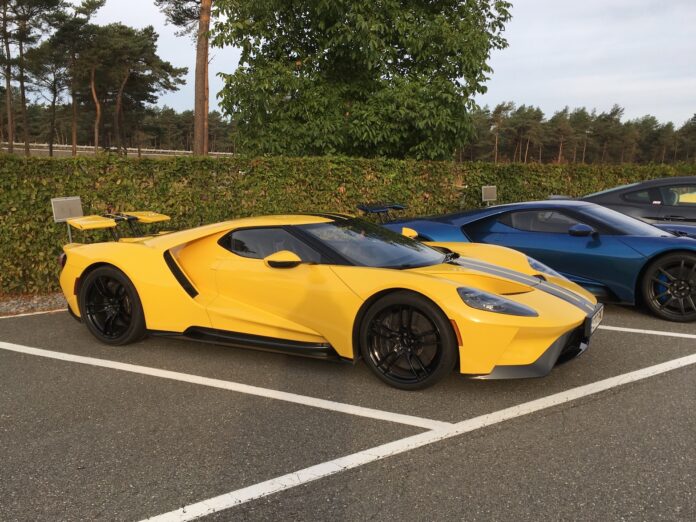28/08/2018 Think of a supercar off the top of your head and you won’t think of Ford. Ford is no Ferrari or Lamborghini in the glamour stakes but it has some motorsport legacy with countless iconic machines… most famously the GT40. The all-conquering 1966 GT was a rear wheel drive car that ruled on the track and was useless in the real world – as all supercars should be. It was built on a Lola chassis, with its rear wheels powered by a mid-mounted V8. The great news is there is a new Ford GT and we’ve been testing it.
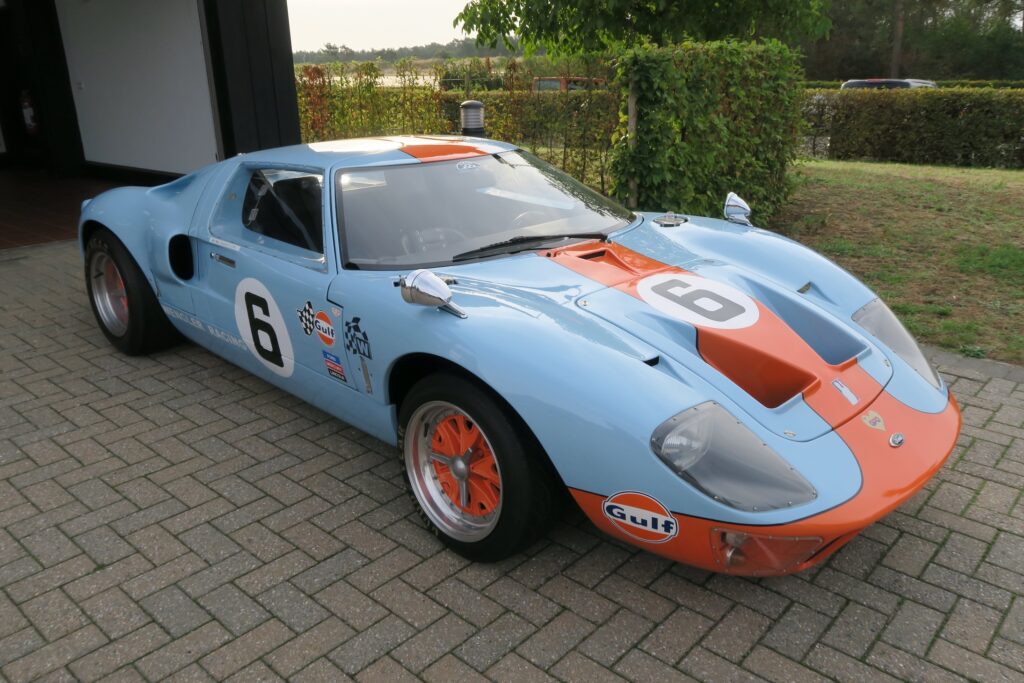
We went to Ford’s European proving grounds in Belgiumas guests of Ford’s performance division for an exclusive day of testing with just a handful of the world’s motoring press. Before the 650hp GT we put on our hemets and took to the track in a 200hp Fiesta ST to raise a giggle, followed by a Mustang GT to enjoy its V8 before hoping into or more acurately lowering down in to the GT supercar. The Lommel proving grounds covers 325 hectares and there are 18 tracks to choose from – staffed by 100 engineers and 300 support staff. First up we took a quick spin on the highly technical ‘track 7’ in the new 200hp Fiesta ST. The two lane test track has jumps, hollows and off camber bends among the hairpins and other contours. One test driver said it best “Don’t miss the apex there, or after you land, the next thing you’ll hit will be a tree.” The brilliantly agile and responsive Fiesta ST raised our pulse nicely.

Next we hopped in to the Mustang V8… it is a primal machine. Lommel’s ‘track 16’ is a banked high speed oval that is relatively relaxing compared to ‘7’. Lane three – reserved for traffic travelling at a minimum of 160km/h – was where we spent most of the time in the brutal and powerful rear wheel drive. We sat grinning and chilled at a contstant 210km/h in the V8 – to go faster requires a Ford certification. The GT’s V8 makes a glorious burble and a giggle inducing growl when you press on. Fun and games over the GT was waiting. Despite the fact we would be doing over 200km/h at times we did not need to wear our the helmets as before as the GT is built with an integral safety cage and carbon fibre tub.
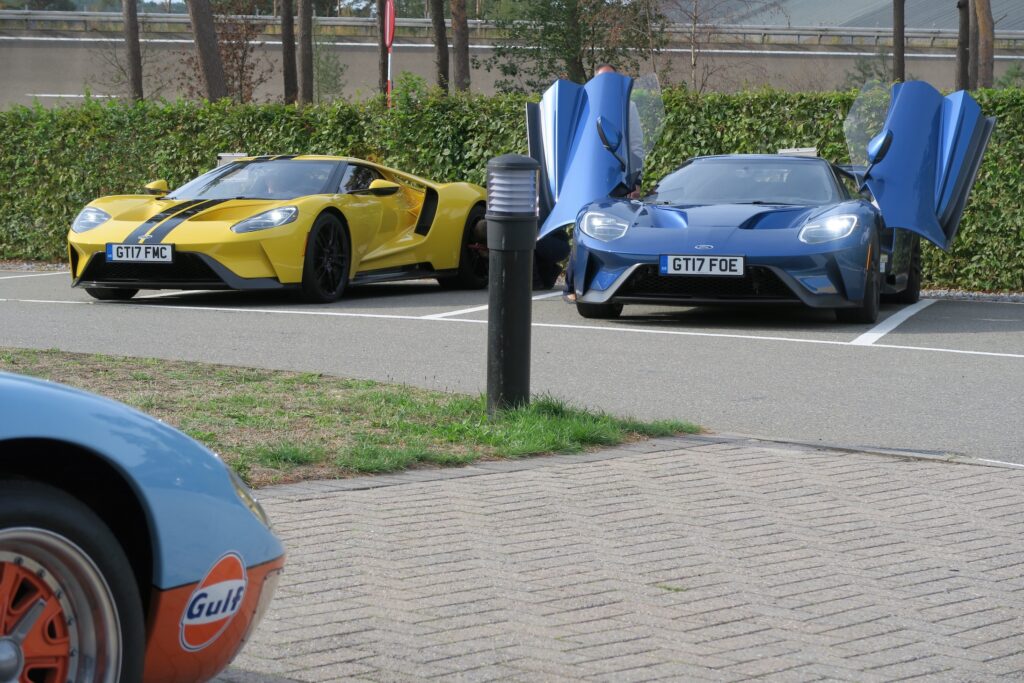
Every bit of the GT is designed for a reason – even its stunning looking buttresses have been hollowed to help channel air to the engine and improve aerodynamics. High speed aero testing was a fundemental element in th ecar’s ultimate shape and every single opening and scoop in the bodywork have purpose. The lightweight body features copious amounts of carbon fibre and aluminium. The air intakes before the rear wheels feed the engine but also the turbochargers’ intercoolers. The GT has the lowest frontal drag in its class and there are active and passive air flaps. The exhaust system’s two huge pipes are mounted high up at almost taillight level and not under the body to aid airflow. The rear taillights are hollow to aid aero performance. Dutchman Lee Roeks, the chief at Ford Performance Europe told me “Primarily everything’s was designed to win LeMans” yet Roeks stresses the GT can be driven daily too.. and it can!
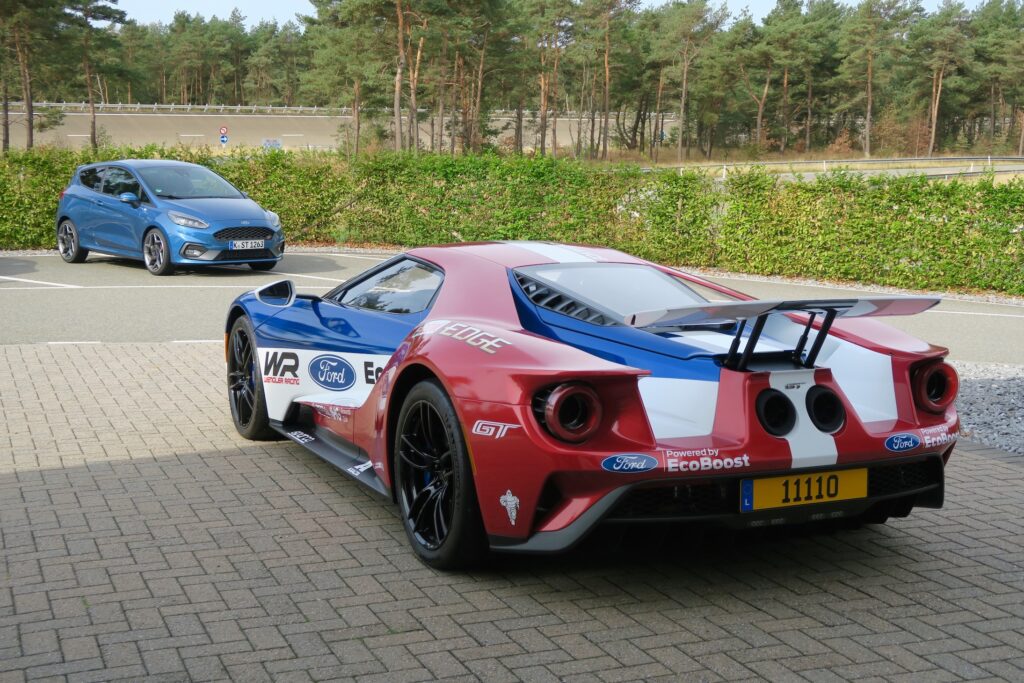
The GT’s unique suspension is astonishing, featuring racing wishbones with inboard mounted active DSSV dampers/shock absorbers. The shock’s internal make up features two springs one of which can be compressed and locked out to deliver track hard suspension and a 50mm lower ride height. In normal mode the GT has a similar ride height at the front as a Mustang GT. Specially tuned carbon-ceramic Brembo brakes are standard. The GT’s 3.5 litre engine is not a V8 like but a twin turbocharged V6 petrol engine and was chosen because it was compact. The EcoBoost unit snarls to life with the press of a button. Not so long ago a road car with a power output of 650hp and 745nm would be seen as witchcraft but in today’s world of 1,000hp+ hybrid hypercars the GT’s output seems relatively modest, that said the sprint from 0 to 100km/h takes just 3 seconds. The GT as cool doors that open upwards revealing the carbon tub and a very sparce interior. The seats are set in the middle of the car and you adjust the pedal box to you – as you do the steering column. Unlike the cramped original, the cabin can fit two fully formed adults. There is a centre touch screen from a Fiesta of all things and a steering wheel with more buttons than Cadburys. Even the indicators are buttons! Part of me wanted lots of coloured switches and race like finishes but in truth I spent most of the time looking out at the horizon coming closer.
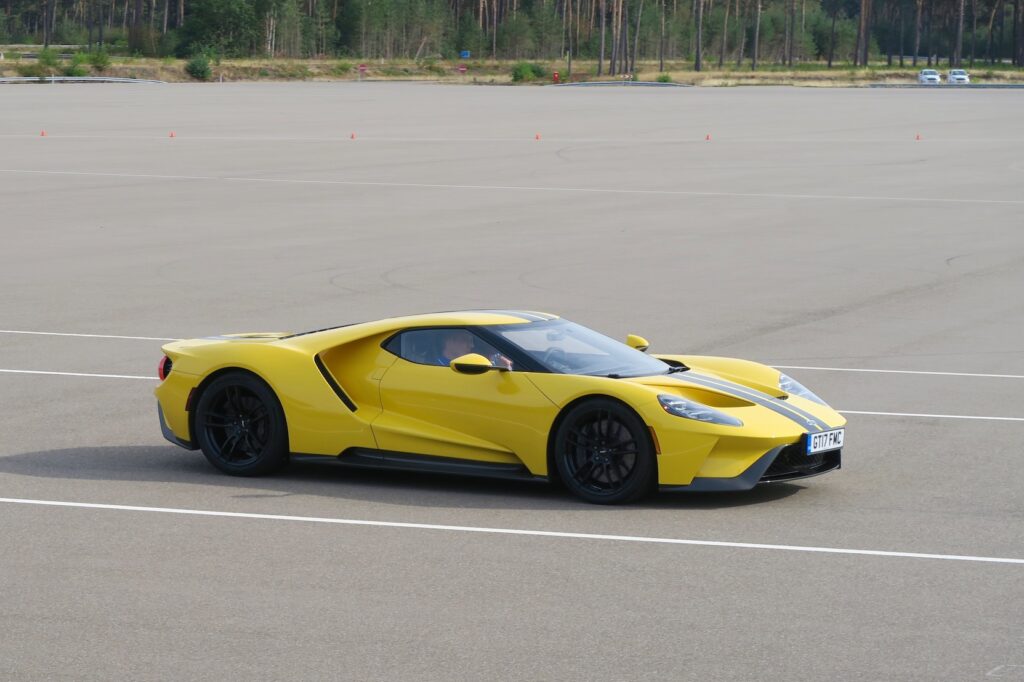
In normal driving mode the GT is a simple to use seven-speed automatic car. We positioned our GT at a starting point of a coned technical track layout in the large VDA (vehicle dynamics area) also know as ‘track 16’. A twist of the rotary dial to M for manual and a further press of a centre button in the dial confirmed we’d be controlling the gear selection. In normal drive mode (one of three) we started rapidly from a standstill as we headed down a long straight. The V6 growled to life and small stones and ou could hear and almost feel dust from the track surface ricocheted off the inner wheel arches. The acceleration was smooth and linear as we tugged at the steering wheel mounted gear shifters up through the cogs without lifting off the throttle, up to about 6,000rpm. Then it was time to brake and settle the car back in to third gear for a long left hander. Sighting the arc of the bend marked out by tiny cones through the side window we entered the turn with the car settled at the right speed to attack the arc at a constant speed and steering angle. The balance was instant and we were easily able to squeeze a bit more power without any complaints from the chassis. The left-hander opened up for a quick dart in a straight line before grabbing some brake and second gear for a sharp right hand bend followed by another brief straight into a hairpin left that then turned in to a very long left hander in second with the revs high. In a road car you could take the hairpin at about 15km/k with a lot of body roll but we were touching 70km/h… and the body was completely flat. Patience and more patience was needed as the limit of grip was almost reached, and that’s the astonishing thing with the GT, we, mere mortals and not race drivers could feel exactly what grip there was and what the car was doing. As we sighted the next right hander we opened up the steering and selected third, then a little dab on the brakes to shift the weight forward as we took the final quick right and powered on as we opened up the steering more to max out in third, fourth and grab a bit of fifth before braking and repositioning to do it all again.
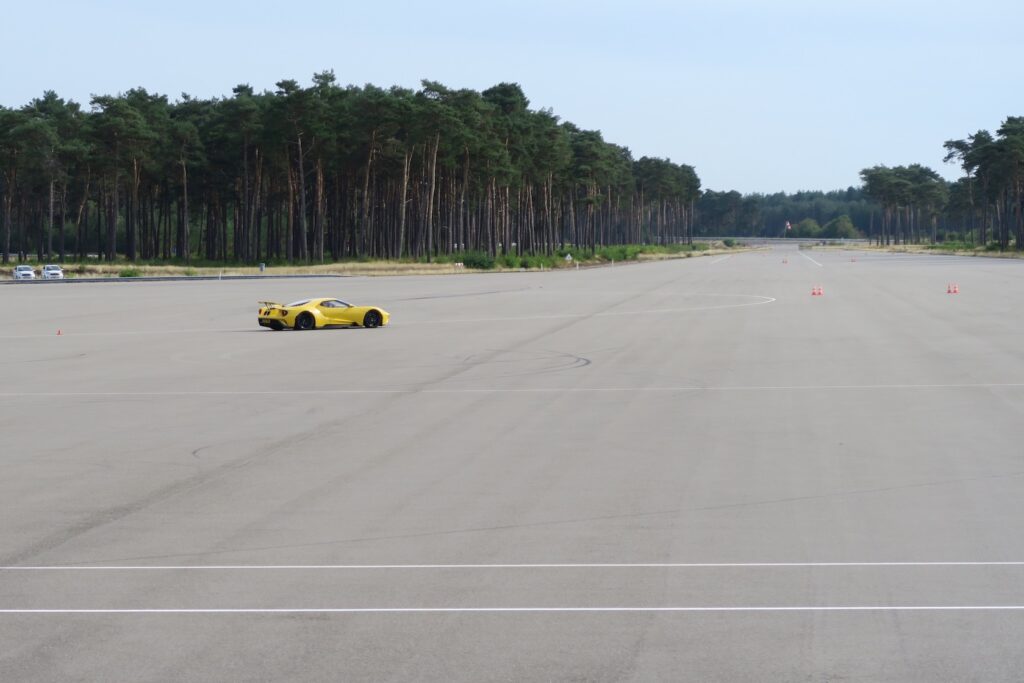
In sport mode, activated by a small dial mounted on the left of the steering wheel boss, the GT comes more alive as the anti-lag system gives a 0.4 second improvement in throttle response time. The engine gets angrier as do the gearshifts as we lap faster again. In track mode, selected by putting the GT in P (park) and twisting the rotary dial, the GT literally drops 50mm with a clunk. The active rear wing pops up and fills your centre mirror, so there is no getting out and turning a key nonsense as with a Bugatti Veyron here. A surprise bonus is that wing in place one can still see a little of what’s behind in the mirror. The wing also acts as an air brake when needed. A lot of the GT’s aero aids are mechanical. Ford didn’t want to add weight with electric motors and this explains all of the clunks and thuds the GT makes that were new to my ears. Track mode helped us deliver simply astonishing control and handling. The GT is ridiculously well balanced and joyful to drive. The engine may lack a V8 sound track but the V6 does a phenomenal job of bring the horizon closer to you. We had minimal corrections to do as we rapidly and without a hint of drama went even faster again around the handling circuit. Most super cars want to bite those with little driving talent but the GT let us know at all times what it was doing and even when provoked would let us correct our course with just a flick of the steering, astounding.
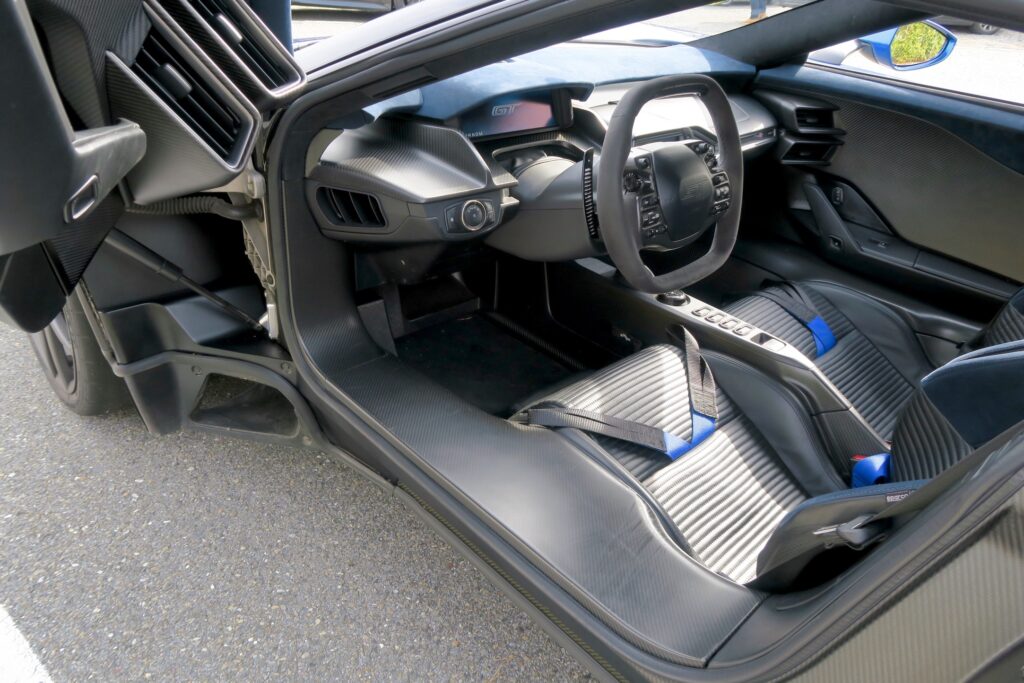
Ford’s street legal GT racer sits alone at the top of Ford’s performance pyramid. At the base is the ST Line, the next layer is ST, then comes a layer that includes the Focus RS, Mustang and Raptor pick up. The elite machine is breathtaking in design terms and its driving dynamics are astonishing. The petrol powered GT sits in the niche between conventional V8 supercars and the new wave of hypercars. A small number of themed GTs are available under the heritage and competition banner. Eight body paint colours are available with eight stripe options also offered. Front, rear and side lower finishes can be finished in shadow black or a choice of matt of gloss carbon fibre. Six versions of 20 inch alloys are offered and four carbon fibre 20s available too. The brake calipers have five colour options. Inside a choice of four trims styles including white and orange allow for a degree of customisation, heavens forbid you ever meet another GT on the street or lose it in a carpark full of grey Audis.
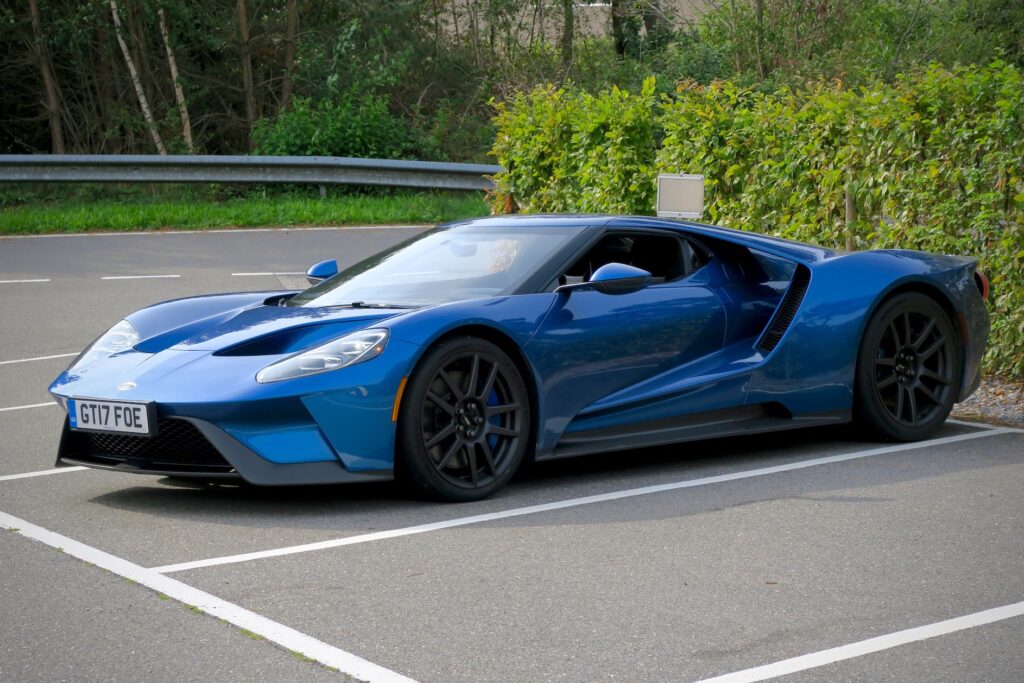
Now before you ask, unless you are on the list you cannot buy one and at present the order books are closed. 1,000 examples are being built at roughly one a day in the States. One anonymous Irish buyer has already received theirs, a dark red machine, one of only 50 allocated to Europe this year. We understand there may be more Irish buyers on the list. The Irish arm of Ford is not directly involved in the process. $400,000 is a figure bandied about as the US price but currency and taxes then have to be factored in. Ford admirably has done its level best to screen genuine fan buyers from car collecting speculators and has refused to sell the car to a number of these types, examples were told to us off the record. Potential buyers had to apply to buy the car and then, if selected, be invited to participate in a conversation with the team would only then talk about pricing etc. This is laudable and refreshing. Bill Ford says the famous one two three finish in the 1966 Le Mans 24 hours race was the defining moment in Ford’s racing history. The original GT40 gave Ferrari a bloody nose on its way to becoming a motoring icon. It’s safe to say the latest Ford GT doesn’t let the legacy down. Michael Sheridan


